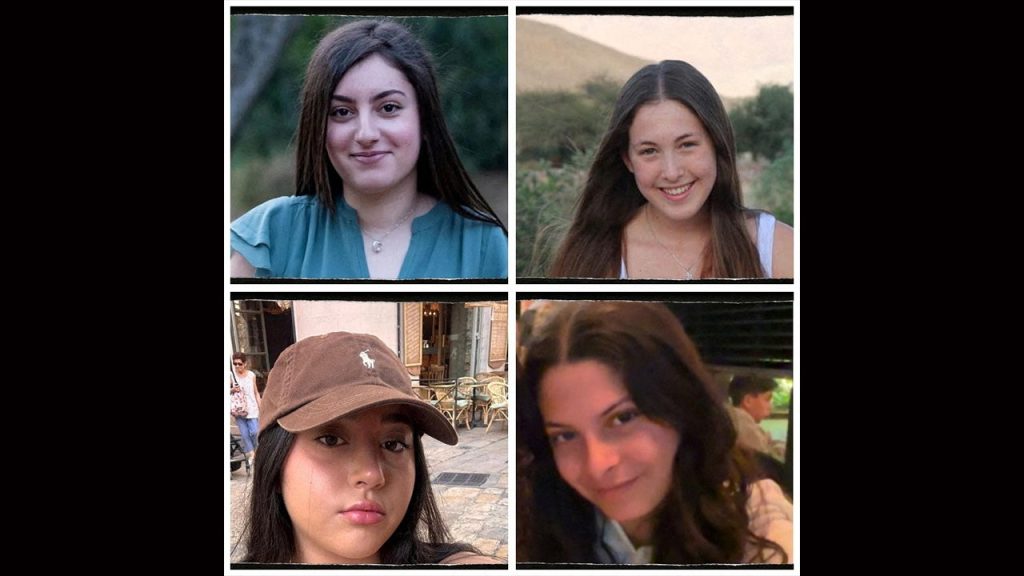The protracted ordeal of Israeli hostages held captive in Gaza is poised to see a glimmer of resolution with the anticipated release of four female soldiers: Karina Ariev, Daniella Gilboa, Naama Levy, and Liri Albag. After 475 days of agonizing uncertainty, their families have been informed of their imminent return, scheduled for Saturday. This development marks the second wave of hostage releases under a fragile ceasefire agreement between Israel and Hamas. The announcement, however, came with a caveat: the situation remains fluid, and the release is not yet guaranteed. Adding to the complexity, the inclusion of soldiers in this round of releases appears to deviate from the agreed-upon framework, which prioritized the release of female civilians, followed by elderly and wounded men. This potential breach raises concerns about the reliability of the ceasefire terms and casts a shadow over the otherwise positive momentum.
The release of these four women comes after three other female hostages were freed the previous week, but leaves 30 individuals still under Hamas control as part of the first phase of the ceasefire agreement. Among those waiting for freedom are two other female civilians, Arbel Yehud and Shiri Bibas, along with Bibas’s two young sons, Kfir and Ariel. Yehud’s case is particularly worrisome due to reports that she is held by Palestinian Islamic Jihad, a separate militant group, rather than Hamas, potentially complicating her release. The fate of the Bibas family hangs precariously in the balance, with Hamas claiming their deaths in an Israeli airstrike – a claim unsubstantiated by Israeli intelligence. Hope flickers that they will be reunited with their husband and father, Yaren Bibas, also designated for release in this phase.
The uncertain circumstances surrounding the hostages’ condition and treatment have been a source of constant anguish for their families and the broader Israeli public. While the impending release of the four soldiers brings a measure of relief, it is tempered by the knowledge that other hostages remain in captivity, including IDF soldier Agam Berger. Berger is believed to have been held with the four women slated for release, raising questions about the criteria used for selecting individuals for liberation. The lack of information regarding the hostages’ well-being, particularly the female soldiers, has fuelled deep anxieties, especially concerning the potential for sexual violence during their captivity. The brutal nature of their capture, documented in video footage showing them injured and paraded by Hamas militants, has further amplified these fears.
The release of the four soldiers is intrinsically tied to a prisoner exchange, with Israel agreeing to release a significant number of Palestinian security prisoners, including individuals serving life sentences for terrorism-related offenses. This aspect of the agreement has understandably sparked debate and controversy within Israel, highlighting the complex moral and security considerations involved in negotiating the release of hostages. The price of freedom, in this case, involves the release of individuals deemed dangerous by Israeli authorities, potentially posing a future security risk. Balancing the imperative to secure the freedom of captured citizens with the potential consequences of releasing convicted terrorists presents a profound dilemma for the Israeli government.
As the families of Ariev, Gilboa, Levy, and Albag brace for the hopeful return of their daughters, the unresolved cases of the remaining hostages continue to weigh heavily on the minds of many. The international community looks on with bated breath, hoping for the swift and safe release of all those held captive. The story of these hostages serves as a stark reminder of the human cost of conflict and the enduring power of hope amidst adversity. The ongoing negotiations and the delicate balance of the ceasefire agreement underscore the complexities of the situation, leaving the future uncertain for those still waiting to be freed.
The narrative of the hostages’ ordeal is woven into the larger tapestry of the Israeli-Palestinian conflict, a conflict marked by prolonged periods of violence, punctuated by fragile ceasefires. The capture and subsequent negotiations for the hostages’ release have become symbolic of the broader tensions and distrust that characterize the relationship between the two sides. The fragility of the ceasefire, coupled with the potential violations of the agreed-upon terms, highlights the challenges in achieving a lasting peace. The families of those still held captive cling to hope, while the Israeli government grapples with the intricate task of securing their citizens’ freedom while navigating the complexities of a deeply entrenched conflict.

